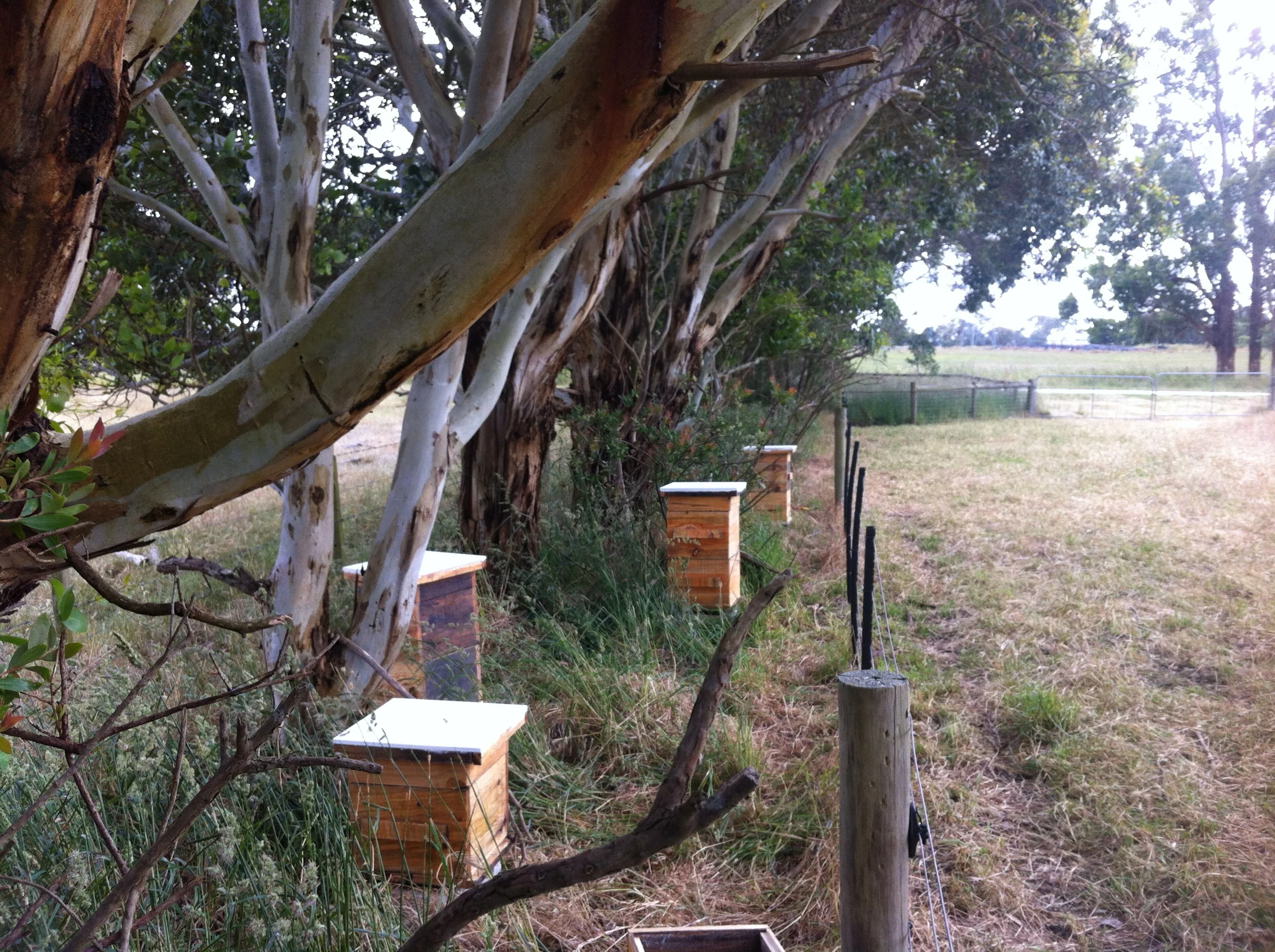Why warré? Like any animal, bees have a "preferred" living environment. A hive that swarms and moves into the vinyl siding on a house isn't actually looking for that sort of a space, because a thin sheet of plastic or tin doesn't do much to insulate from either the heat of summer or the cold of winter (but it's better than nothing). Bees have an ideal temperature of 35 degrees C, and have to heat or cool the hive. With this in mind, and knowing something about insulation, how heat moves, and by watching bees build comb under various conditions, it becomes possible to figure out what the bees are actually looking for.
Langstroth hives have some big benefits to the beekeeper. With a queen excluder (a mesh to keep the queen out) the top boxes are basically guaranteed to just have honey in them. New boxes are added to the top, which is easy on the beekeeper's back. Foundation sheets and wire frames make it possible to cut the tops off the combs and put them into a centrifuge to spin out the honey, and the entire honey extraction process can essentially be automated. Previously drawn comb can be re-used, meaning the bees can just fill it up with honey again. The boxes fit nicely next to each other on a truck, so it's easy to move them from one place to another for pollinating different crops at different times of the year.
But it can be hard on the bees. The queen wants to lay her young in fresh, new comb, and is prevented from doing so. The empty boxes above the brood chamber don't insulate the young, and worker will often start filling the brood box with honey because they don't like moving through the excluder. Re-using the comb from the centrifuge concentrates toxins in the hive, and not giving the queen fresh comb can concentrate toxins in the brood chamber. When it's winter, bees have trouble moving side to side in the hive to access their winter stores of honey in the rectangular box, and can starve to death with honey only centimetres away.
(image by Dustin Bajer) A langstroth hive is what most beekeepers have. It is an anthopocentric design, ideal for producing lots of honey, for manipulating comb, and for mass-production.
(image by Dustin Bajer) A warre hive is what I keep. It is an apicentric design, ideal for the bees.
The warré hive is named after its inventor, Abbé Émile Warré (1867-1951), and attempts to emulate the way bees build inside a hollow tree. This system is an attempt at a more apicentric design. New, empty boxes are added to the bottom of the hive, so the brood are always protected by an insulation layer above. The queen always has the option of laying her brood in new comb, and when it hatches out, the bees can put honey into that comb. The hive has an insulation box on top to keep the temperature more stable inside the hive, and the walls of the hive are make of thicker wood for better insulation. In winter the bees are free to move up or down the hive to find honey. Fewer stresses on the bees from me mean they can deal with other things (disease, pests, seasonal variability, environmental toxicity). The entire structure is well suited to staying in one place.
The downside, for me, is that everything is hand crafted. Each box is made, by me, from locally sourced timber. Nadiring the hives (adding boxes to the bottom) is heavy lifting. The bees are in less of a rush to re-fill the top box with honey, and it takes more energy to make new comb all the time, so my honey harvest is significantly lower than with a langstroth. Because I don't micro-manage the comb it is often build in interesting ways to maximise internal hive access or temperature control, so I can't use a centrifuge even if I wanted to.
In the end, I get better quality honey and happier, healthier bees. The benefits far outweigh the costs in my opinion!
